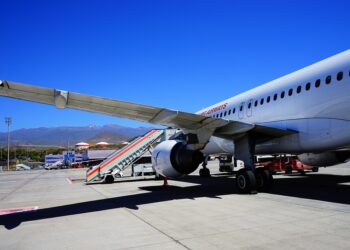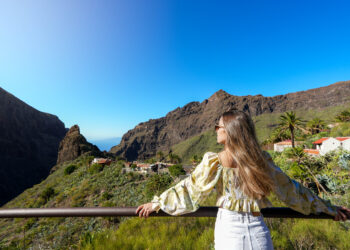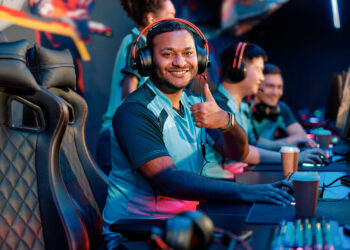The Cavendish bananas have an interesting story behind how they got their name and how they became such a popular fruit around the world. Here are some entertaining stories about their origins.
Charles Edward Telfair was born in Belfast in 1778. As a child, his hero was Rear Admiral Horatio Nelson of the Royal Navy. When Telfair was not more than 20 years old, he earned qualifications to be a medical doctor. In the same year, 1797, Horatio Nelson lost his arm in the Battle of Santa Cruz. Telfair joined the Royal Navy right away as the ship’s surgeon.
During the time of the Napoleonic Wars, Telfair’s regimen was involved in the blockade of the Mauritius and Réunion islands in the Indian Ocean. After the islands’ capture, Telfair was stationed on Réunion serving in various capacities until the Congress of Vienna returned the island to France in 1815. The next year, Telfair was stationed in Mauritius. There, he took the post as the secretary to Robert Farquhar, the island’s First Governor.
During this time, Telfair got into the sugar planting trade. In 1816, he bought the Bel Ombre factory and implemented some modernisations. The machinery was upgraded and the factory workers received better working conditions. He established a school for the children of the factory workers and the school still stands today, bearing his name.
Telfair’s real passion was in botany. He co-founded the Natural History Society of Mauritius. For three years between 1826 and 1829, he was appointed the honorary curator of the Botanical Garden on Mauritius. This allowed him to procure seeds and cuttings of exotic plants from locations around the world. He developed these plants and forwarded the samples to his peers.
Telfair received a very interesting plant in particular, which was a dwarf banana plant. This species was assumed to have originated in Cochinchina (now Vietnam).
In 1829, he sent two samples of this dwarf banana plant to his colleague, Robert Barclay (1751-1830) in England. The plants were accompanied by a letter he wrote saying that he had collected all known species of bananas, which he called “musa.” He further stated that the two samples that he sent belonged to the most valuable species because it bore abundant fruit. The plants also only grew to be three feet high, which was the perfect size for the hothouses in England.
Robert Barclay was of the banking dynasty and was originally from Philadelphia.
He had been brought over to England by David Barclay to run the Anchor Brewery located in Southwark, London.
This grew to be the biggest brewery in the world. From 1751 to 1955. It operated as Barclay, Perkins & Co. until it merged with Courage.
In 1815, Robert Barclay purchased almost a thousand acres of land on the Bury Hill Estate, located in Dorking, Surrey. He enjoyed creating garden retreats adorned with decorative lakes. He loved to garden and was a botanist.
The Birmingham Botanical Gardens was later designed by his lead gardener and in 1828, Telfair sent Barclay samples of the Alpinia species. Sadly, Barclay died in 1830, so he did not have a chance to witness his dwarf banana tree bear fruit.
New Legacy at Chatsworth House
After Barclay died, his plants were sold. The two banana plants were sold to the Young Nursery in Epsom. One of the plants eventually got sold to the head gardener at Chatsworth House, Joseph Paxton, for £10.
He purchased it on behalf of William Cavendish, 6th Duke of Devonshire and owner of Chatsworth House.
The other banana plant was exported.
Glass greenhouses were making their debut during that time, and Paxton was greatly interested in them. He designed a greenhouse on the estate and had it built. He cultivated the banana plant in it, but it was three years before the plant bore any fruit.
The Duke had never seen a banana before and was quite anxious waiting for the tree to bear fruit. During this time, Dr. Daniel Rock, who was the Chaplain of Alton Towers, sent the Duke a banana right before Christmas of 1834. The Duke was filled with bewilderment and gratitude. He wrote a thank-you note to Rock, praising how beautiful and interesting the fruit looked, and how it was the focus of admiration at his dinner table that day.
After waiting three years, the plant that Paxton so carefully cultivated was finally filled with blossoms in November of 1835. By May, the plant produced an abundance of bananas. To Paxton’s credit, one of the bananas even won the Knighton Silver Medal the same year at the Royal Horticultural Society’s Show. To honour his employer, Paxton named the plant “Musa Cavendishii.” The Linnean Society accepted this as a new variety.
Word travelled far about this remarkable banana cultivated by Paxton. After Paxton received all the accolades, he received a letter from Messrs. Young & Co, the Nurserymen. They were furious about undercharging Paxton for the plant at £10, and said that Paxton should have paid £100 for it. Needless to say, Paxton ignored their complaint.
From Chatworth House, the Musa Cavendishii was propagated and plants were sold to all parts of the world.
If the climate was suitable, the plant grew quickly. The fruit became a main source of food for many countries.
But Wait, There’s More
There is another story of how the Cavendish bananas were introduced by John Williams (1796-1839).
Williams was the first missionary to Samoa. He took along two cases of Cavendish banana plants that Chatsworth House prepared for him for this trip. However, only one plant out of the many survived the journey to Samoa. Despite the loss, the one plant became the start of the banana industry for Samoa and other islands on the South Seas.
Just like Robert Barclay, John Williams did not live long enough to witness his banana plant bearing fruit.
In 1839, he and James Harris, a fellow missionary, went to Erromango. They were unfamiliar to the natives, so they were killed and cannibalised. In the Samoan city of Apia, there is a memorial dedicated to John Williams.
There are stories in some history books describing how the missionaries also introduced the Cavendish bananas to the Canary Islands. However, there is no truth to that.
Alfred Diston and Tenerife
In 1810, Archibald Little (1760-1845), who was the head of the company Pasley, Little & Co., a merchant of wine, sent 17-year-old Alfred Diston to Tenerife.
Diston was instructed to learn the business, then act as a liaison between the company and its important customers, which include guests on the island. Diston also had wonderful artistic talents, and he would make fine sketches of the costumes of the Canarian natives. During all of his travels as the company’s representative, he always took along his sketchbook.
Diston had three sets of his paintings printed by the London printing firm, Smith, Elder and Company.
In 1824, he named his first set, “The Natural History of the Canary Islands,” and dedicated this set to his employer, Sir Archibald Little. He had worked for his employer for 14 years, so no doubt he was happy with his situation. Archibald Little must have been pleased as well with the performance of his servant.
The wine industry was on a downturn in 1834 and Diston was still working for Pasley & Little, but he was also accepted into the membership of the Royal Economic Society of the Friends of the Island of Tenerife.
This Society was founded by rich royalists. by Royal Decree in 1788 who created the Garden of Acclimatisation in the Port of Orotava. It is the same Botanical Garden today.
Diston was appointed to be the Inspector of the garden. He worked there with a skeleton crew and introduced new specimens to see if they were suited for the climate. He often spent his own money to manage this garden. One of the plants that he introduced to the Canary Islands was the Cavendish banana plant.
In 1846, he took three Cavendish banana plants to Tenerife. This plant would turn out to save Canary Island’s economy. As to where he got the plants from, the story went back to 1853.
The 12th November 1853 issue of Eco del Comercio had an article about a new species of dwarf banana from Cochinchina, introduced to the islands by Alfred Paxton seven years ago. It described the fruit’s richness and exotic flavours that had become very popular in the region, more desirable than other species of bananas.
It states that these bananas bore the scientific name of Musa Cavendishia, and that their original three specimens came from Scotland where they were cultivated in the greenhouses owned by Sir Thomas Hepburer.
Writings of Don Manuel de Paz Sanchez can attest to the abundance of Cavendish bananas around this time.
In 1850, Herman Schacht (1814-1854) visited the Canary Islands and Madeira. He encountered other species. These include Musa Paradiscia, Musa Sapientum, and Musa Cavendish. He noted that the banana plants did not grow in areas above 600 to 700 feet, and they did better in lower areas. He also stated that on Tenerife, there were large plantations of these plants everywhere.
So, this shows that the Cavendish Banana was introduced to the Canary Islands by Diston and not by the missionaries.
If Sir Thomas Hepburer could be found, he could also corroborate on the story. Scotland has no Clan Hepburer, but a Clan Hepburn does exist. The history of the Cavendish Banana can be traced back to the Hepburns, too.
Smeaton Hepburn
The story took place in East Lothian, Scotland, in 1833. Sir Thomas Buchan-Hepburn (1804-1893) was heir to the title of the 3rd baronet of Smeaton Hepburn. Along with the title was a grand mansion with enclosed gardens constructed in 1793 by his grandfather, the first baron.
Sir Thomas had a passion for horticulture. He had plans to develop the estate with greenhouses, a new arboretum, and a lake. He was a member of the Edinburgh Botanical Society and frequently attended horticultural events throughout his life.
He acquired a Musa Cavendishii plant and cultivated it in his greenhouse on his estate. He either got the plant from Joseph Paxton during one of the Horticultural Shows, or from the Duke of Devonshire during a session of the House of Parliament.
How were Buchan-Hepburn and Alfred Diston connected?
In 1835, Buchan-Hepburn married Helen Little, who was the youngest daughter of Archibald Little, Alfred Diston’s employer and patron.
Alfred Diston was highly respected on the island, much like his employer and mentor, Archibald Little. Diston did not live long enough to see the full extent of the fruits of his labour.
In 1888 and thereafter, the harvesting of the Cavendish Bananas was done by Thomas Fyffe and afterwards by the Yeoward Brothers. They shipped their inventory to Britain on refrigerated steamships.
Currently, the Canary Islands’ economy is still greatly supported by the cultivation of the Musa Cavendishii, which is the islands’ primary agricultural commodity.
















